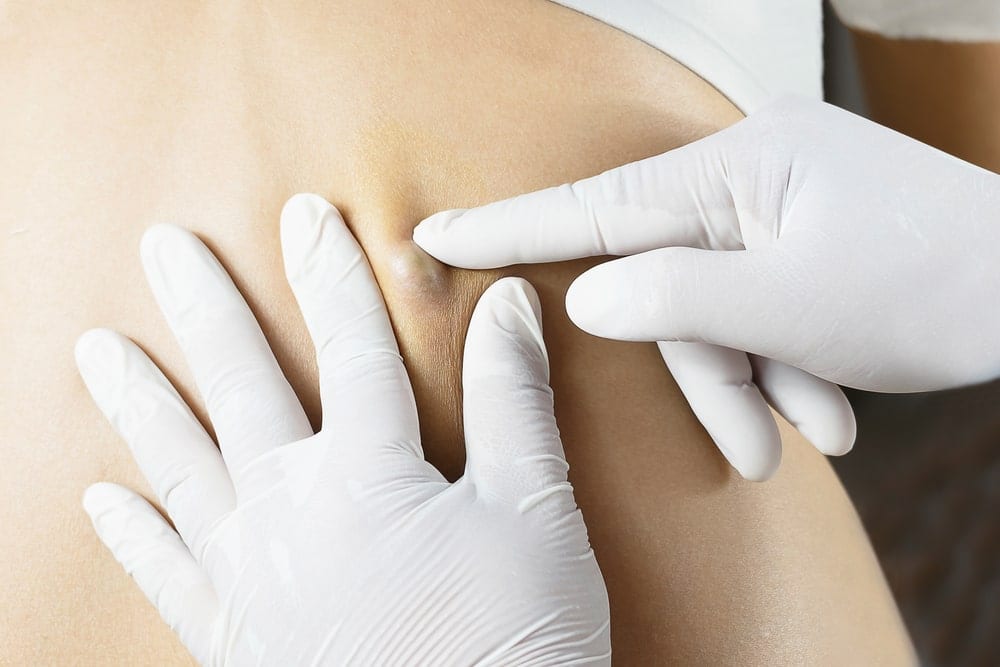Henderson Cyst Removal
What is a Cyst?
Sacs filled with air, fluid, or any other material that is formed in the skin or on the body are called Cysts. Removing a cyst through cyst removal treatment includes getting rid of the fluid along with its’ surrounding sac. Cysts that are small (less than 5 cm) and the ones which appear on less sensitive areas are removed after providing the patient local anesthesia. However, deeper cysts in sensitive areas may require more extensive procedures for removal.
Dr. Dasari performs a variety of cysts removal treatments in Henderson for the following types of cysts:
Epidermoid (Inclusion) Cyst: A white creamy discharge is produced in inclusion cysts when keratin is built up underneath the skin’s surface. The discharge is usually foul-smelling as it comes from dead skin cells. These can become enlarged up to 18 cm. Epidermoid cysts turn red and painful on being infected and could appear in areas like the back, face, legs, arms, and neck.
Sebaceous Cyst: Hair follicles secrete an oily liquid called sebum. The inward growth of these follicles creates pores that cause issues on back, scalp, face, and armpits. These tend to grow large and become infected – requiring surgery.
Pilonidal Cyst: These are usually observed along the upper gluteal cleft and result in recurring They start from teenage and go on during adulthood also. This cyst derives from inward hair growth. Hair removal and removal of the cyst wall are essential otherwise these infections remain persistent and painful. Typically, a skin flap is utilized to cover this sensitive area to achieve great wound healing.
Breast Cyst: These types of cysts might be malignant and it is best to always treat with caution. Smaller cysts and fibrocystic disease are seen on ultrasound or MRI of the breast. On the contrary, larger cysts are removed and sent for evaluation by pathological departments. You require keeping a close check on these cysts so they do not become cancerous.
Ganglion Cyst: Sacs filled with fluid are called ganglion cysts. They appear around the joint of hand, ankles, wrist, feet, elbows, knees, and hands. They might appear due to constant pressure or an injury.
Henderson Cyst Removal Treatment
Dr. Dasari performs cyst removal treatments in Henderson at an outpatient surgery center or Henderson Hospital. These cysts generally require a removal treatment that utilizes local anesthesia to numb the affected area, before making a small cut. After the cut is made, Dr. Dasari pulls out the cyst – leaving a scar that may be the same size as the cyst.
Post-Surgery Care:
There may be drainage for a couple of days so it is suggested to keep the wound covered with a dry bandage. Oral antibiotics or antibiotic creams must be taken as per Dr. Dasari’s recommendation, even if the wound is healed.









